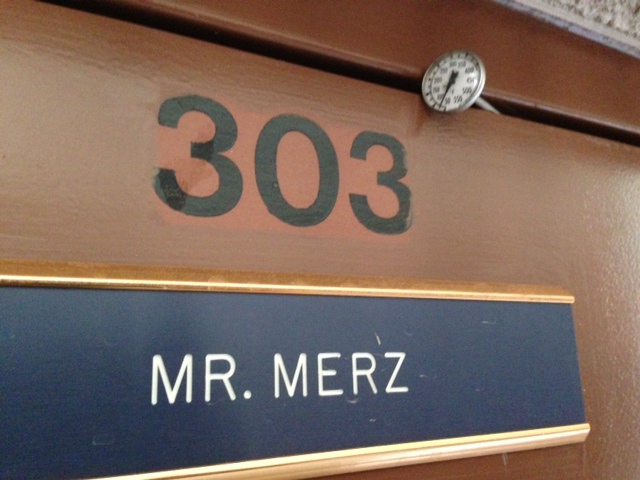Blogger Julie Torres coordinates support for National Board candidates in our district. In that capacity she observes many teachers at their practice. In her recent post, 10 Degrees of Teaching, Julie takes the temperature of the current teaching environment and lists ten observations. After reading her post I wondered how students, our most expert observers, read the temperature in the teaching environment.
So I gave a prompt, modeled directly on Julie’s post, to my 8th grade Algebra for High School Credit class. I said their responses shouldn’t be about me, but about how they read teachers as a whole, given Julie’s 10 stems. The first response to each stem, in italics, came from the same student. Thoughtful responses from other students are separated by semicolons.
Here is the prompt: “As students you constantly assess the learning environment of a classroom, in essence taking the temperature of any given situation. I wonder how you view teachers and the teaching climate. I bet some things you see are pretty obvious, but I am curious about what you think is happening under the surface of teaching. Please quickly respond with short phrases to the prompts. The most important thing is that you go beneath the surface and avoid obvious answers. I’ll use your responses for a post at the Stories from School blog. (www.storiesfromschool.org)”
1. Teachers currently: Are still learning to be a better teacher; Teach interesting stuff; Don’t look at the viewpoint of students; Talk too much
2. Teachers wish for: More help; Students who pay more attention (about the only other answer kids wrote)
3. Teachers are wondering: Why the kids are not ready to focus; What will improve grades and test scores; What students think of them; Why it’s hard to focus
4. Teachers are feeling: They might be failing as a teacher to teach the kids what they need to learn; AIMS pressure; Courage; Accomplished; That kids don’t care
5. Teachers are thankful for: All the hard work they put in; Students who try
6. Teachers are planning for: The future, to be a better teacher; New students, a new year, and how to teach better; AIMS; Student success
7. Teachers need: To have a little more learning impact; New methods; To ask students opinions more; Patience; Avoid talking too much; Confusing students and “misunderstanding” them
8. Teachers are avoiding: The super needed questions for kids. For example, how fast each student can think and give them more time; Kids who don’t care; Kids that don’t put in effort, concentrating on the kids who want to accomplish something
9. Teachers are craving: More time to teach what they want in a year; School grades to go up; Summertime!; Retirement; An “A” school not a “D” school; Attention from kids
10. Teachers are missing: Some of the tools they need to succeed; Fundamentals; That sometimes they might have to go over things clearer; Patience; Listening to students opinions
I get three messages from these students’ responses: 1) They wish for their voice to be heard by teachers, who talk too much. That makes them a lot like teachers who long to be heard but are lead by policy makers who don’t listen. 2) They acknowledge that some classmates don’t care, don’t listen, and don’t focus. What would it take for more teachers to admit that about some of their colleagues? and 3) They recognize that teaching is a skill that must be developed and that most teachers long to perfect their craft, but lack opportunities to do so.
Teacher leaders talk a lot about the crucial conversations that need to happen to reform education. We could do worse than to begin those conversations with the people right in front of us.
(Note: I gave the prompt at the end of class, told them it was optional and must be completed on their own time, after al l their homework, and that they would get no class credit. I edited some responses for length, grammar, and spelling.)









